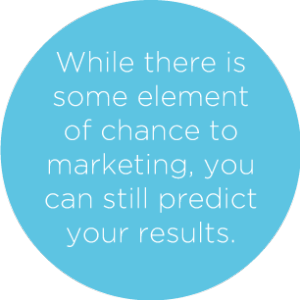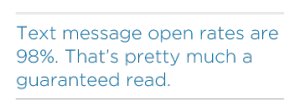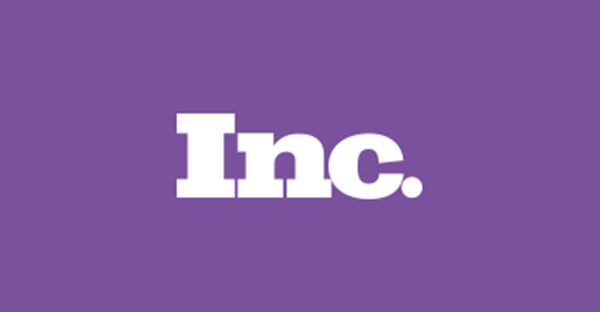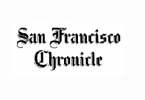
Article via Fast Casual: In his best-selling personal finance book arguing that investors can’t consistently beat the market, economist Burton Malkiel says that “a blindfolded monkey throwing darts at a newspaper’s financial pages could select a portfolio that would do just as well as one carefully selected by experts.” Many experts have tested this theory and have since shown that stocks picked through monkeys throwing darts often do beat stocks selected by experts.
However, should you employ this strategy when it comes to marketing? Should you just guess at what tactics to employ? Facebook ads, newspaper coupons, TV spots, sports team sponsorships, Google Adwords, promotional flyers, or radio ads–just throw a handful of darts and see what sticks! When I talk to many business owners and even marketing managers, I think this is too often their approach. In this blog post, I want to show you why marketing is very different from picking stocks and how you can beat the “monkeys” every time you execute a marketing campaign.
3 tips to beat the monkeys
With stocks, the theory of efficient markets says that since most information relevant to a stock’s future performance is publicly available, it is very difficult to predict a stock’s future value. However, marketing is nothing like this. While there is some element of chance to marketing, you can still predict your results. You do this by looking at past data, or data from comparable campaigns, and improve your results by systematically focusing on specific drivers of your campaigns. Let me give you three tips to predictably improve your marketing results.
1. Get your targeting right
 Oftentimes, in marketing the tendency is to focus too much on creative messaging, when over 50 percent of your results are dependent on getting the targeting right. A good working knowledge of who dines at your restaurant most often (age, gender, occupation, average income, etc.) will be invaluable when coming up with your message and targeting. In my experience, for example, when I’ve tried a relatively un-targeted direct mail campaign, I’ve seen response rates in the 0.25 percent rate, but when I’ve used the exact same creative and offer but improved the targeting, I’ve seen response rates jump by more than five times.
Oftentimes, in marketing the tendency is to focus too much on creative messaging, when over 50 percent of your results are dependent on getting the targeting right. A good working knowledge of who dines at your restaurant most often (age, gender, occupation, average income, etc.) will be invaluable when coming up with your message and targeting. In my experience, for example, when I’ve tried a relatively un-targeted direct mail campaign, I’ve seen response rates in the 0.25 percent rate, but when I’ve used the exact same creative and offer but improved the targeting, I’ve seen response rates jump by more than five times.
For restaurants, one simple way to get targeting right is to choose to focus promotional marketing on your existing customers, who already know your business, versus brand new prospects. This could increase your marketing results by 10 to 15 times easily.
2. Understand marketing channels
There are tons of ways to communicate with your target audience, and understanding the conversion rates of each marketing channel will help you sift through all the options. Here are the facts.
When it comes to traditional print advertising, your conversion rates will be in the fractions of a percent. For example, while leading Small Business Marketing at Facebook, if we put inserts into a magazine with a broad audience promoting Facebook advertising, we would see less than 0.1 percent conversion. The same inserts placed in a targeted magazine did much better and ended up with 0.25 percent conversion. You have to do the math with your print campaigns to see if these kinds of numbers could work for you.
 With email, you could see higher conversion rates. Email marketing has open rates that hover around 20 percent, with an average conversion rate of over 1 percent (if the targeting is done right), and studies show that 44 percent of email recipients made at least one purchase last year based on a promotional email. Have a customer loyalty program? A recent Experian Marketing Services’ report found that emails targeted to customer loyalty program members have a 40 percent higher open rate.
With email, you could see higher conversion rates. Email marketing has open rates that hover around 20 percent, with an average conversion rate of over 1 percent (if the targeting is done right), and studies show that 44 percent of email recipients made at least one purchase last year based on a promotional email. Have a customer loyalty program? A recent Experian Marketing Services’ report found that emails targeted to customer loyalty program members have a 40 percent higher open rate.
Text message marketing engagement is even four to five times higher than email. Text message open rates are 98 percent and messages are opened within 3 minutes. That is pretty much a guarantee that all customers are going to read it. From my experience, text conversion rates could exceed 8 percent, so text message marketing can be a solid bet in today’s information-overloaded digital world.
3. Measure your ROI
 The easiest way to measure your marketing campaign ROI, compare it across campaigns, and improve it over time is to use the revenue to cost ratio: incremental revenue driven by a marketing campaign divided by the cost. For example, one of our Fivestars merchants, a local restaurant in Texas, ran a text message campaign to their loyalty program members. It cost them six dollars to send the text to a few hundred of their customers. Four percent of the recipients of the text visited the restaurant and spent a total of $110. The rule of thumb for most companies is that revenue to cost ratio of 5x is a decent return, but in this campaign it was 18x! Scaling this campaign and investing less than $600 could increase their restaurant’s revenue by over $10,000 per year.
The easiest way to measure your marketing campaign ROI, compare it across campaigns, and improve it over time is to use the revenue to cost ratio: incremental revenue driven by a marketing campaign divided by the cost. For example, one of our Fivestars merchants, a local restaurant in Texas, ran a text message campaign to their loyalty program members. It cost them six dollars to send the text to a few hundred of their customers. Four percent of the recipients of the text visited the restaurant and spent a total of $110. The rule of thumb for most companies is that revenue to cost ratio of 5x is a decent return, but in this campaign it was 18x! Scaling this campaign and investing less than $600 could increase their restaurant’s revenue by over $10,000 per year.
Throw away the darts
Before committing to any specific marketing campaign, sit down and fully think through what you hope to accomplish with your campaign and whether your campaign can realistically achieve your goals. That way you won’t have to rely on throwing darts at a wall when choosing between a magazine advertisement or Google ads, etc. Your marketing campaigns can succeed if you know your target, understand differences between channels, and measure your results. So give the darts back to the monkeys.






Leave a Comment